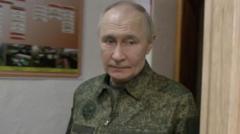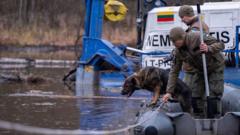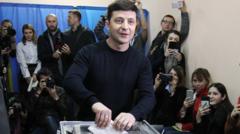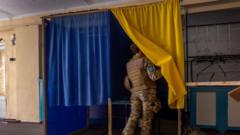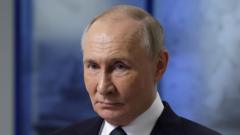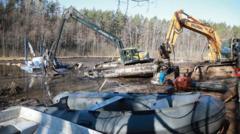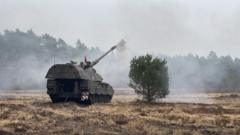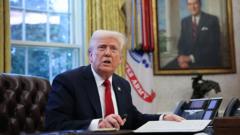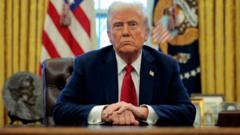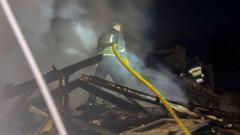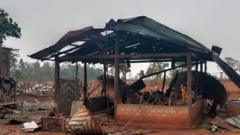As President Vladimir Putin mobilizes an additional 160,000 conscripts, questions arise regarding the escalating military situation in Ukraine and the implications for national security.
Putin Initiates Major Military Draft Amid Ongoing Conflict
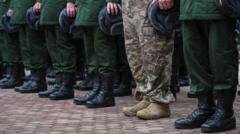
Putin Initiates Major Military Draft Amid Ongoing Conflict
In a significant move, Russia has announced its largest military call-up in over a decade, impacting thousands of young men.
The Kremlin has activated a call-up of 160,000 men aged 18 to 30, marking its largest conscription effort since 2011. This initiative comes as President Vladimir Putin aims to bolster the military's strength, presenting plans to increase the total military size to approximately 2.39 million and the number of active servicemen to 1.5 million over the next three years, representing an increase of 180,000 personnel.
Vice Admiral Vladimir Tsimlyansky asserted that the newly conscripted individuals would not be deployed to Ukraine, where Russia continues to conduct what it terms a "special military operation." However, previous reports indicate that conscripts have indeed faced combat in the ongoing conflict, especially during the early months of the extensive confrontation.
The draft, occurring between April and July, unfolds amid persistent violence, as recent strikes in Ukraine have left thousands without electricity. While Russia reports territorial gains, the global community remains concerned about the impacts of Russian military operations.
This latest draft is not only a reflection of current military needs but follows an escalation in the pool of eligible young men, with the maximum age for conscription raised from 27 to 30. In addition to standard call-up notices, young men will now receive notifications digitally via the Gosuslugi state services website, enhancing the government's efforts to reach its potential recruits.
Moreover, alongside the regular draft, Russia has actively recruited contract soldiers and sourced additional manpower from North Korea to compensate for extensive losses in Ukraine, with figures surpassing 100,000 verified casualties reported.
The Russian defense ministry attributes this military expansion to "growing threats" stemming from the Ukraine conflict and NATO's recent expansions, including the additions of Finland and Sweden. Notably, Finland has begun discussing the need to withdraw from the Ottawa convention banning anti-personnel mines due to military pressures, citing interventions deemed necessary for national security. Meanwhile, Finland plans to ramp up its defense budget significantly.
The unfolding events prompt speculation about the political landscape in Ukraine, leaving citizens and observers alike questioning the trajectory of leadership under President Volodymyr Zelensky amidst the ongoing war.
Vice Admiral Vladimir Tsimlyansky asserted that the newly conscripted individuals would not be deployed to Ukraine, where Russia continues to conduct what it terms a "special military operation." However, previous reports indicate that conscripts have indeed faced combat in the ongoing conflict, especially during the early months of the extensive confrontation.
The draft, occurring between April and July, unfolds amid persistent violence, as recent strikes in Ukraine have left thousands without electricity. While Russia reports territorial gains, the global community remains concerned about the impacts of Russian military operations.
This latest draft is not only a reflection of current military needs but follows an escalation in the pool of eligible young men, with the maximum age for conscription raised from 27 to 30. In addition to standard call-up notices, young men will now receive notifications digitally via the Gosuslugi state services website, enhancing the government's efforts to reach its potential recruits.
Moreover, alongside the regular draft, Russia has actively recruited contract soldiers and sourced additional manpower from North Korea to compensate for extensive losses in Ukraine, with figures surpassing 100,000 verified casualties reported.
The Russian defense ministry attributes this military expansion to "growing threats" stemming from the Ukraine conflict and NATO's recent expansions, including the additions of Finland and Sweden. Notably, Finland has begun discussing the need to withdraw from the Ottawa convention banning anti-personnel mines due to military pressures, citing interventions deemed necessary for national security. Meanwhile, Finland plans to ramp up its defense budget significantly.
The unfolding events prompt speculation about the political landscape in Ukraine, leaving citizens and observers alike questioning the trajectory of leadership under President Volodymyr Zelensky amidst the ongoing war.


